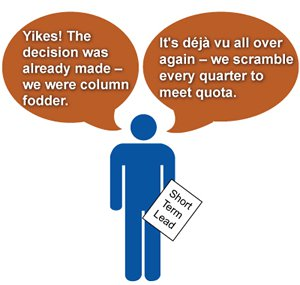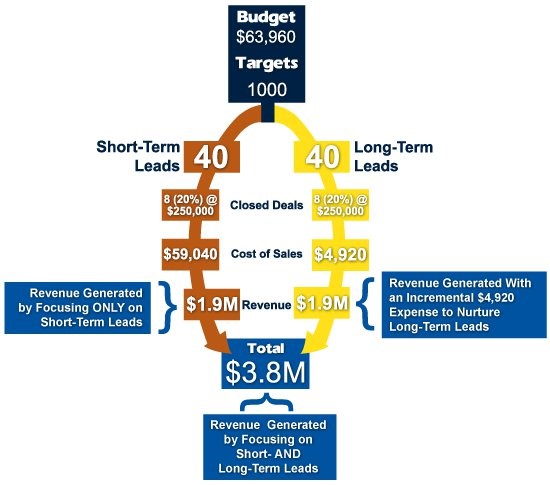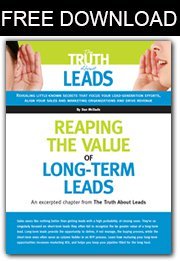Long-term leads often prove to be more valuable than those slated for a short-term decision. It may seem counter intuitive, but there are three key reasons why B2B companies need to pay more—not less—attention to opportunities not yet ready to close:
1. In many cases hot opportunities are already baked.

Often hot leads are really buying companies that have already been sold by another vendor. They’ve indicated they have a short buying cycle and they’re eager to talk, but what these buyers may be doing is validating a decision already made. They’re looking to you for what is frequently called column fodder, or price comparison after-the-fact, to justify the purchase of a competitive offering.
A longer-term lead may lack urgency, but it makes up for it by giving your team a very real chance to form relationships with decision makers, and in fact define and manage the buying process (including designing the RFP). This is an advantageous position to be in—and one that leads to more deals closing and a reputation as the go-to resource in your category.
2. Longer-term opportunities increase marketing ROI.

The numbers consistently show that organizations that pay proper sales attention to all leads are better stewards of their marketing budgets. They’re insuring money spent to generate leads isn’t wasted simply because the qualified prospect isn’t in a hurry.
Here’s an example: Marketing spends $60,000 to generate 80 leads. Forty are short term, and 40 are long term. If the 40 long-term leads are not followed up on simply because they’re a buying cycle or two out, $30,000 (half of the total spent) is wasted. If on the other hand, all 80 are worked appropriately, and sales closes 20% of the total at an average selling price of $250,000, revenue is doubled. It costs only an incrementally small amount to nurture long-term leads to fruition.
3. Leads at every stage of the buying cycle are essential for a healthy pipeline.
For predictability and consistency in meeting your numbers, you can’t count on just one type of lead in the pipeline. Companies need a mix of short-term and longer-term opportunities to keep the quarterly scramble at bay, and they need for all involved to understand the significant value of the less-than-hot lead.
Weigh the cost, weigh the benefit. No company can begrudge the incremental dollars (in the example below, it’s less than $5,000) it takes to nurture long-term leads already generated and qualified, across additional cycles, into the opportunities that drive revenue growth over the long haul.

If you’re interested in learning more about how to effectively nurture your long-term opportunities to increase your marketing ROI, and close more deals, read this excerpted chapter from the book The Truth About Leads by Dan McDade.




